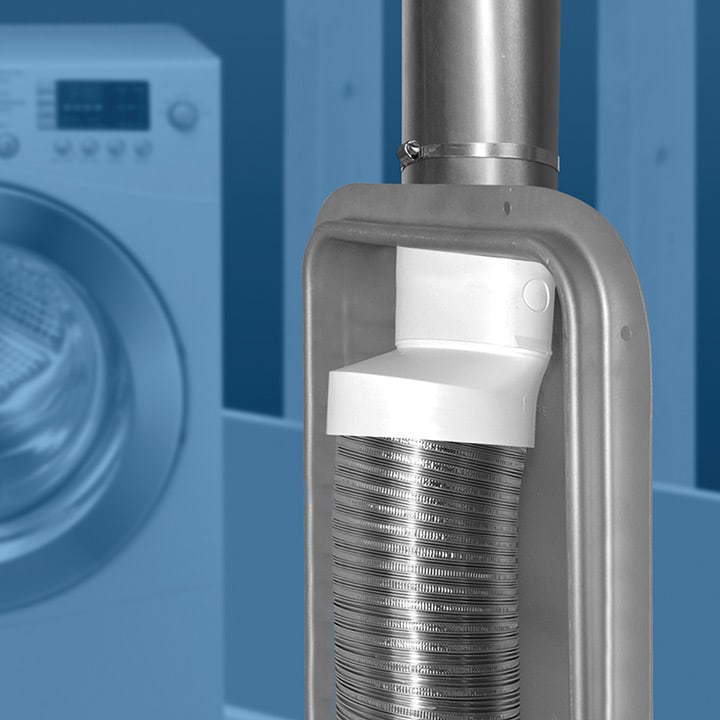

You provided a service that Amazon did not delivery to Puerto Rico(even as a Prime customer). Your company was very prompt in getting the item to me in Puerto Rico. When you live in a condo, space is a premium item. Both tend to trap lint, and plastic duct tubing can easily melt if heat buildup becomes too great.Posted by Larry Eminhizer on 30th Mar 2022
#Space saver dryer vent code#
Dryer vent tubing is not a very expensive material, so it makes little sense to save money by "buying cheap." Instead, make sure you are following the local code guidelines for installation. Working with rigid metal duct and adjustable collars can be a bit tricky, however, so some homeowners will opt to have the installation done by a professional.ĭryer vent tubing comes in several types, but some are better than others and some should be avoided entirely due to possible safety issues. This kind of configuration-with smooth-walled vent running from dryer all the way to vent hood outlet-makes for the very best installation. Adjustable metal elbows, also with smooth walls, can be used to make the transitions between the rigid vent and the dryer outlet on one end and the vent hood on the other end. And building codes generally allow for runs as long as 35 feet, compared to the 8-foot maximum for flexible transition tubing. Rigid metal duct is more expensive than other types, but it is extremely durable and efficient.

Available in aluminum and galvanized steel, rigid metal duct is very smooth on its interior, so air flows through with little friction, and it catches the least amount of lint of any duct material. Rigid metal duct is the only suitable duct material for concealed duct installations- that is, ductwork that runs inside walls, floors, or other enclosed areas. Semi-rigid tubing should be used for the entire duct run-dryer outlet to exhaust vent hood- only if the duct run is quite short and direct (less than 8 feet), only if it is exposed rather than hidden, and only if your local code allows such use.īest for: Any dryer vent application, hidden or exposed. This type of duct tubing has some inner corrugation and thus tends to trap some lint. While it is sometimes used for an entire exposed duct run, such use is questionable. Semi-rigid metal duct is also relatively inexpensive.

Semi-rigid metal duct is often stronger and has a smoother interior (catches less lint) than foil duct. It is typically installed with clamps, which make it easier to remove for cleaning. Like foil duct tubing, semi-rigid duct tubing should be used only for the transition ducting running from the dryer outlet to the main duct, and it cannot be concealed in walls or floors. Semi-rigid metal (usually aluminum) duct tubing is flexible and similar to foil tubing but quite a bit more rigid. It is best used for the relatively short sections to join the dryer outlet to the main vent. Metal tape can also be used to secure the flexible aluminum duct, too, but clamps make it easier to remove the tubing for cleaning.Īluminum foil duct is inexpensive and relatively easy to work with, but it has ribbed walls that can trap lint, leading to potential fire hazard. Foil duct is held in place with dryer clamps or large hose clamps. Transition ducts must not be concealed inside walls or other building cavities and usually have a maximum allowed length of eight feet. Double-check to make sure that this type is approved for your dryer model and allowed by local code. It generally should not be used for the entire duct run.įoil duct can accordion from about 1 to 8 feet, which is usually enough for most installations. Made of flexible aluminum foil with an embedded spiral wire for reinforcement, this type of duct is appropriate for making the transitions from the appliance to the main rigid duct that runs to the outdoor vent hood outlet.



 0 kommentar(er)
0 kommentar(er)
